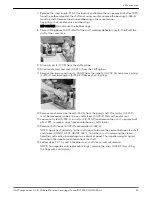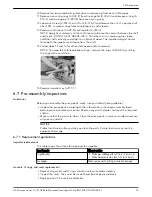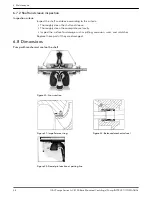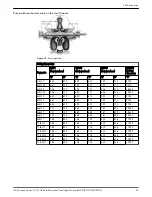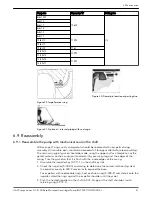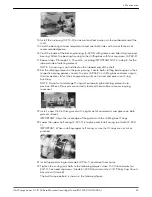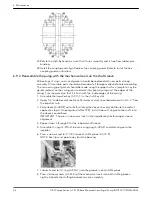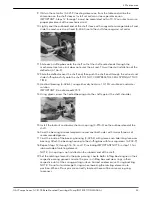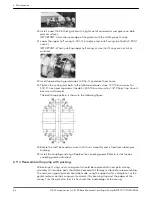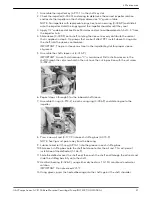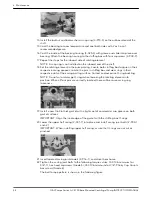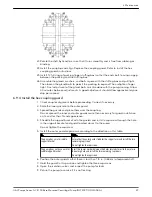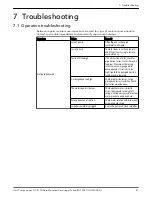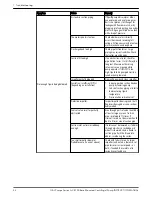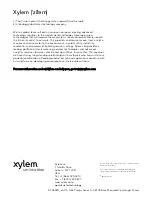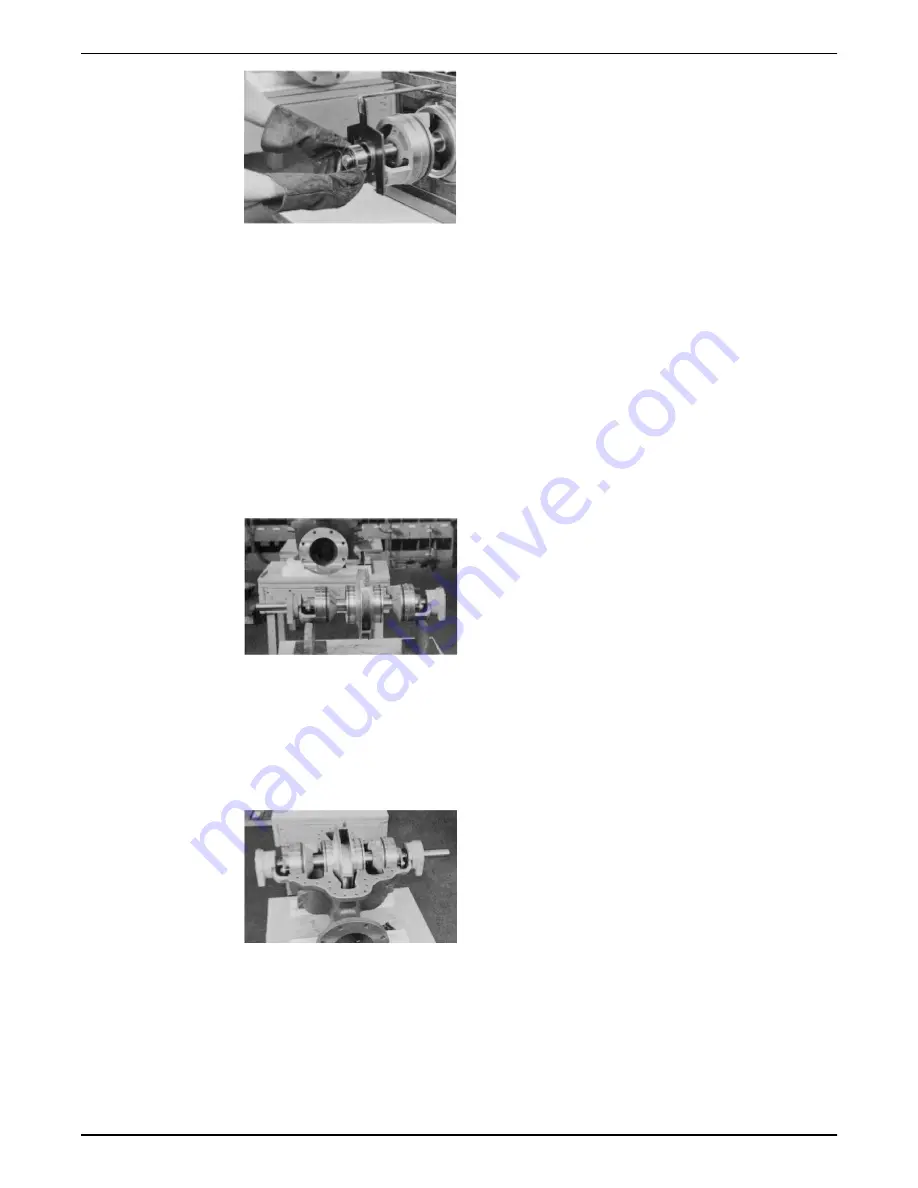
14.Install the locknut and lockwasher or snap ring (3–915–4) on the outboard end of the
shaft.
15.Cool the bearing to room temperature and coat both sides with 2 or 3 oz of
recommended grease.
16.Coat the inside of the bearing housing (3–025–4) with grease and slide into place over
bearing. Attach the bearing housing to the stuffing box with four capscrews (3–904–9).
17.Repeat the steps for the inboard side of rotating element.
NOTE: A snap ring is not installed on the inboard end of the shaft.
18.Set the rotating element in the pump casing. Locate both stuffing box tongues in their
respective casing grooves. Locate the pins in stuffing box and wear rings in their
respective slots at the casing parting surface. Correct and excessive O-ring buckling.
NOTE: Do not cut or damage O-rings when lowering the rotating element into
position. When all four pins are correctly located, there will be some casing ring
looseness.
19.Install a new 1/64 in thick gasket with a light coat of commercial cup grease on both
gasket surfaces.
IMPORTANT: Align the inner edge of the gasket with the stuffing box O-rings.
20.Lower the upper half casing (2–001–7) into place and install casing joint bolts (2–904–1
and –2).
IMPORTANT: When installing upper half casing, assure that O-rings are not cut or
pinched.
21.Insert tapered casing joint dowels (2–916–1), and drive them home.
22.Tighten the casing joint bolts to the following torque values: 140 ft-lb minimum for
5/8”-11 hex head capscrews (Grade 5); 350 ft-lb minimum for 7/8”-9 Ferry Cap Countr-
bor screws (Grade 8).
The bolt torque pattern is shown in the following figure.
6 Maintenance
48
G&L Pumps Series A-C 8100 Base Mounted Centrifugal Pump INSTRUCTION MANUAL


